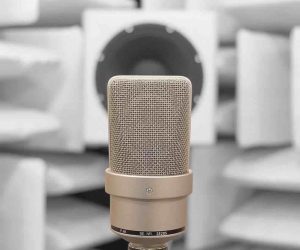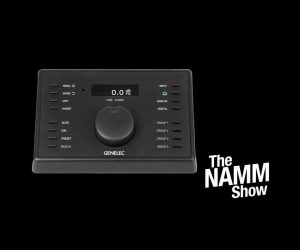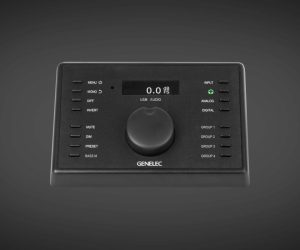
Measuring Sound: Part 1
Most of us couldn’t give an FFT about measuring sound, but how many of us know how it actually works?
Text: Hugh Covill
Pronunciation: ‘me-zhu(r)’
Function: noun “…the dimensions, capacity, or amount of something ascertained….”
Can we measure sound? If so, how do we do it and what will these measurements tell us?
A wise man once said to me: “Good sound is the absence of bad sound”. I love sayings like that. If you’ve ever wondered about quantifying sound; if you mix live gigs or put together PA systems regularly, if you have the same monitor speakers as your buddy but his sound ‘way’ better that yours and you can’t figure out why, then these next few pages are for you. Ostensibly aimed at the live sound practitioners this ‘foot in the door’ into the world of measuring sound will, I hope, be of interest to a broad range of sound practitioners.
So read on and measure up!
THE BACKGROUND
The last 10 years has provided a heady rate of evolution for those of us working at the live end of the audio pond. While processor speeds and capabilities have continued their inexorable climb, the price point for these same technologies has continued on a downward trend. The impact of this has been two-fold: applications predicated on DSP technology and pioneered in previous decades have come of age, and these technologies have now become financially viable for a good proportion of our industry.
The design and development of digital consoles, A/D converters, digital delay technology, DSP-based loudspeaker management, and advances in crossover technology, speaker technology and line transmission protocols have all been driven by the technological paradigm known these days as Moore’s Law (after Gordon Moore, co-founder of the Intel Corporation who famously stated in 1965 that: “the number of transistors on an integrated circuit for minimum component cost doubles every 24 months”). This pace of change has added a complexity and sophistication to the PAs we use on a daily basis. Correspondingly, the tools that we use to measure and quantify the performance of PA systems have become commensurately sophisticated. Ten years ago a notebook computer was the tool of perhaps only a few practitioners working at the highest levels of the industry. These days you’d be hard-pressed to find a mix engineer, sound designer or system engineer without one on the job.
An important application on most live sound laptops is usually some type of measurement program; the most familiar and ubiquitous of these being the dual-channel FFT-based measurement system. Unfortunately, much of the wider audio fraternity views these measurement tools as complicated and baffling, and their application a black art. Actually, the fundamentals of dual-channel FFT analysis share much in common with your garden-variety audio samplers, and very few people would consider them baffling. If you understand the fundamental variables: sample start/end, loop start/end, root key, pitch table etc you can fairly easily move from one application to another. It’s the same with measurement applications.

SCRATCHING THE SURFACE
So what is FFT and why do we want to be measuring our sound systems using it? Well firstly, let’s find out what the letters stand for! The letters F.F.T. stand for Fast Fourier Transform, which is a mathematical process for moving signals between the time and frequency domains. And the best way of explaining what that means exactly is to take a look at some illustrations. (See Fig. 1)
The top of Fig.1 shows a snare hit in the familiar DAW wave sample representation. This almost universally-recognised waveform represents the time domain – even cricket’s ‘Snicko’ tool uses it! This time domain waveform is simply amplitude (the variation in a changing quality from its zero value) shown on one axis plotted against duration (time) on the other axis.
But there’s more to the graphic display of audio files than a time domain graph. Using FFT we can create an alternative view of this same snare hit – the transfer function of this wave sample – i.e., move from the time domain into the frequency domain. This alternative view displays the frequency spectrum of the snare hit plotted against magnitude (a change in level expressed in dB).
An FFT analyser will allow you to switch between these two views with the click of a button.
But isn’t the FFT analyser’s frequency spectrum just like some more precise RTA (Real Time Analyser)… the type you see in iTunes or a car stereo display? Not quite. An RTA measures and displays sound pressure (in 1/3-octave frequency slices) instant-by-instant – there’s no measurement over time, it’s simply a whole bunch of snapshots. Meanwhile, a dual-channel FFT measurement requires a sample of the sound but lets you determine the duration of that sample (the FFT size). This provides the user with the ability to view data over a given time period. So now, if you have two or more speakers a distance apart, an FFT will clearly indicate the arrival of each sound event as well as any acoustic anomalies, such as reflections. (See Fig. 2)
If you examine Fig 2, you can plainly see the difference between the RTA (which displays spectral content at an instant) and the impulse response’s ability to reveal a variety of time domain data and also yield a transfer function (frequency vs magnitude) plot. Having access to both domains provides us with a wealth of additional information when compared to the RTA display, information you need when you’re dealing with multiple sources. After all, if these multiple sound sources are not perceived as originating from the same point in time then the listening experience can become very disorientating.


COMPARE & CONTRAST
Dual-channel FFT measurement provides a means of comparing two signals (usually the sound system’s input with the output). The ‘transfer function’ can therefore be thought of, generally, as describing what happens to a signal on its way from input to output.
Dual-channel FFT typically employs pink noise at the output of the mixing desk as a reference and compares that with what the measurement microphone is hearing from the speakers in the room.
Why pink noise? The short answer is that pink noise acts as a reference signal with a flat frequency response, meaning that it has equal energy per octave, and as such, if you input this signal to an RTA you will see a flat line across the entire audible frequency range.
So if the measurement microphone also exhibits a flat frequency response then we can listen to pink noise (flat response) out of the room’s speakers and use FFT to obtain a transfer function of the sound system’s response. Such a ‘transfer function’ is comparing the output of the desk with the output from the loudspeaker and its inherent interactions with the room as recorded at the measurement microphone. Simply put, it’s showing what has changed. Bear mind that any dynamic processors (compressors, limiters etc) must be bypassed while measurements are being taken, as they’ll inevitably introduce their own non-linearities.
A-TYPICAL SETUP
Let’s return to Fig 1 again (the no-name speaker) and follow the process of making a measurement. On the left hand side (time domain) is the impulse response. Making this measurement involves a reference signal (often pink noise) that is fed to both the measurement system and the speakers with the sound coming out of the speakers recorded at a microphone. Once you know how long it took for the signal to travel through the sound system, out the speakers, through the air and into the microphone (this is the peak of the impulse: approx. 1ms) you can delay the reference signal so the two signals are aligned in time. Now we can perform a transfer function measurement (the frequency domain) to compare the reference signal with the sound captured at the microphone point.
ACTING ON IMPULSE
It’s worth dwelling on the term Impulse Response a little more. The impulse response is arguably the most important measurement available to live sound practitioners. Learning how to make this simple measurement and understanding the terminology doesn’t take a long time. What does take time is learning how to set variables for the appropriate measuring task and then interpreting the information the programs reveal. These are skills that only develop with experience. An impulse response can communicate a huge amount of information: direct sound level, room decay time, noise floor level, reverberant sound levels, identifying reflections and the direct-to-reverberant ratio levels (that are used to determine intelligibility) to name but a few. The ability to view data in both the time and frequency domains provides for a veritable smorgasbord of visual data that can greatly assist sound engineers with the tasks of sound system time alignment, tuning (setting a listening curve) and electro-acoustic investigations. We should be mindful, though, that despite all this visual feedback, we’re still working with sound and must trust our ears. Measurement can put us in the ballpark but the homeruns are only hit with lots of critical listening. We need to be prepared to reject data that doesn’t correspond to what we’re hearing. Your ears must remain the final arbiter.

TUNING TIPS
Most live sound folk will begin using measurement tools with the aim of improving their sound system ‘tuning’ (although, I like to call it ‘optimisation’). When attempting to ‘tune’ and align a sound system here are some thoughts that may be helpful:
Listen to the sound system with your favourite music. Use a varied selection of music you know well. I like to use minimal, sparsely constructed music without a lot of reverb; it’s better for discerning how the system decays and for hearing reflections. How well does what you hear correlate with the measured data? If you can clearly hear an abundance of midrange, but this is not reflected in the measured data, then there’s a strong possibility that the measurement setup is flawed, so recheck your equipment. Play some vocal music. This is a really good way of listening to how well your delay speakers are set. Is there smearing in the high frequencies or timing problems? Listen to the transition areas where the loudspeaker coverage overlaps i.e. where the coverage of one speaker finishes and is replaced by coverage from a delayed speaker. Be clear in your own mind about the listening curve you’d like to achieve. Have some similar music to use as a reference – i.e., don’t take a Three Tenors CD to a hip hop gig.
PHASE & EQ
After measuring comes fixing, and the first solution most engineers will reach for is their EQ. But it’s worth understanding that, generally, acoustical or electronic problems cannot be resolved with equalisation. For example, if your measurements reveal a difference in phase between the left and right sides of a PA that could be traced to wrong driver polarity in a single speaker. Such a scenario is not something you’d want to compensate for with equalisation. The same applies to destructive reflections and incorrect crossover settings – they cannot be ‘EQ’d out’.
So, if you’re measuring a dip in response at a certain frequency, do you solve this with EQ? Further measurements at different locations can help establish if the dip is audience-wide or just in one area. Equalisation should be used to re-balance the sound system’s interaction with its acoustic space and artistically to sculpt the listen-curve.
EAR EAR
FFT Measurement systems are a kind of Swiss army knife for sound folk. The trick is knowing when and where to apply the correct tool and how to interpret the results. Puccini once wrote, “Music is noise submitted to order by wisdom”. The most valuable tools we have as sound people are our ears. We can use a measuring tape to buy a metre of silk; the tape cannot, however, quantify the quality of that silk. Similarly, sound systems require human input to determine the subjective aspect.
This article is very much a case ‘for’ measurement. Anything that assists us to better understand what we’re hearing, and consequently attain better sound outcomes more consistently, benefits our practice greatly. This article has left many questions unanswered and there’s much that I’ve skated over in pursuit of a ‘bigger picture’. Stay tuned…
Measuring Sound: Part 2
In an interview with System Sound’s Julian Spink, we explore PA measurement techniques, test mics, the problems with line array and A/B PA systems.
















RESPONSES